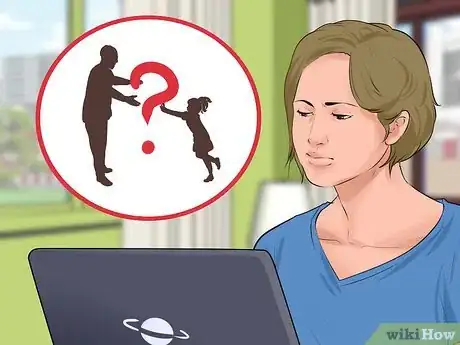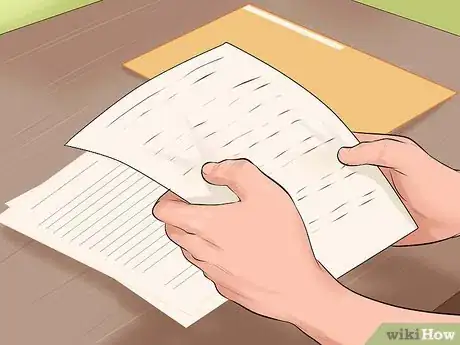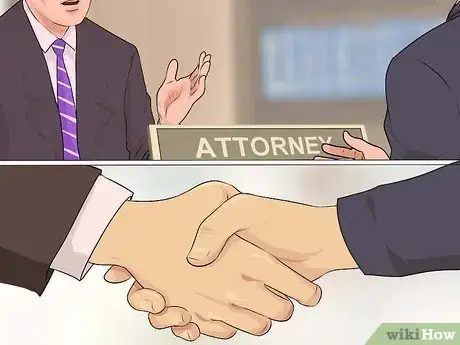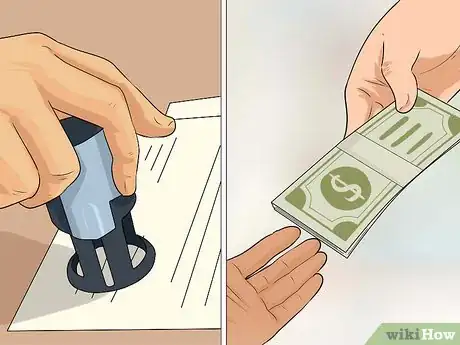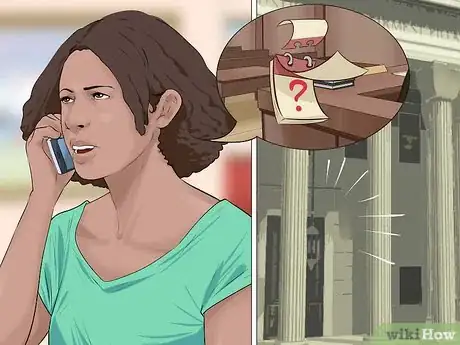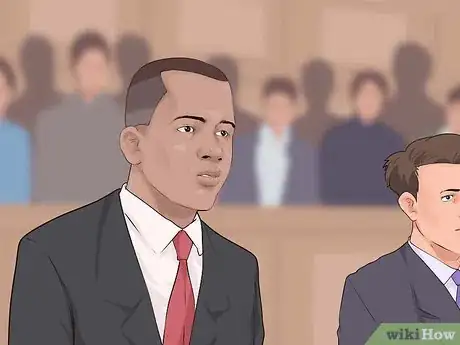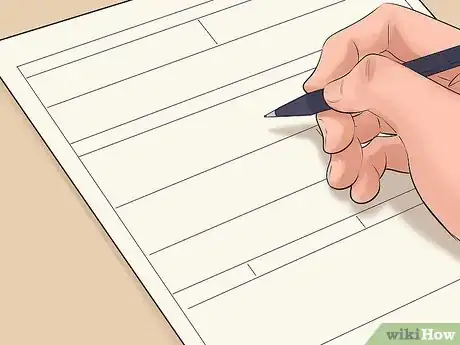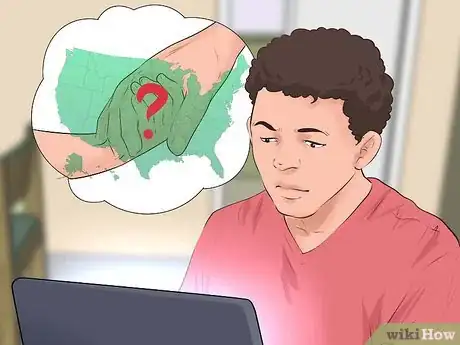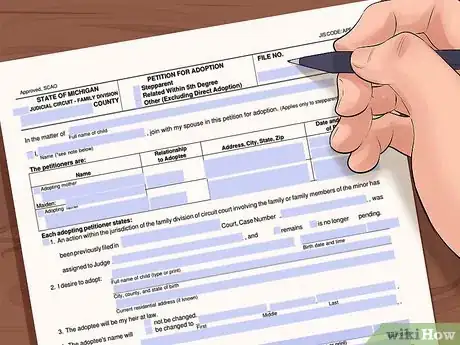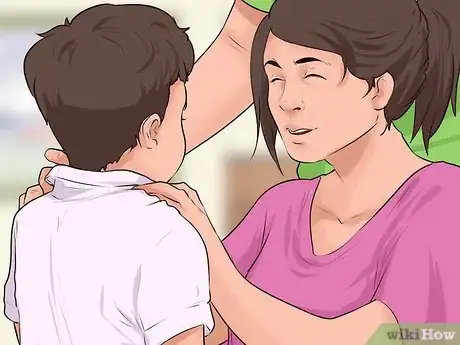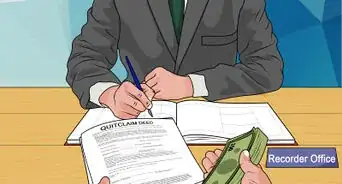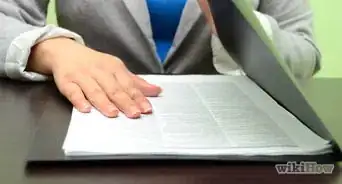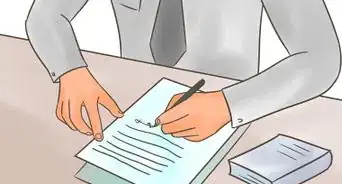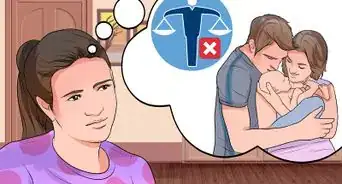This article was co-authored by Clinton M. Sandvick, JD, PhD. Clinton M. Sandvick worked as a civil litigator in California for over 7 years. He received his JD from the University of Wisconsin-Madison in 1998 and his PhD in American History from the University of Oregon in 2013.
There are 8 references cited in this article, which can be found at the bottom of the page.
This article has been viewed 43,238 times.
Every state recognizes a grandparent’s ability to request visitation with a grandchild.[1] However, if you want to terminate those visitation rights then you have two options. First, you can petition the court to terminate the visitation rights. Second, in some states you can stop grandparent visitation by adopting the child if you are a step-parent. In order to properly proceed with terminating grandparent visitation, you should meet with a qualified family law attorney.
Steps
Preparing to Terminate Grandparent Visitation
-
1Understand the basics of grandparent visitation. Every state has different requirements for granting grandparent visitation. In some states, grandparents can only get visitation if the parent who is their child has died or if the parents are divorcing. In other states there is no such limitation.[2]
- Furthermore, every state will require that grandparent visitation be in the “best interests of the child.”[3]
This term refers to a variety of factors, including:[4]
- the need for stability and continuity
- the child’s interactions with the grandparents
- the child’s wishes (if the child is old enough)
- the age and sex of the child
- For more information on how your state determines a child’s “best interests,” you should research your state law. Type “best interests of child” and your state into an Internet search engine. Look for your state’s domestic relations laws. The “best interests” factors should be listed there.
- Furthermore, every state will require that grandparent visitation be in the “best interests of the child.”[3]
This term refers to a variety of factors, including:[4]
-
2Gather evidence. In order to terminate grandparent visitation, you need to show that there has been a change of circumstances and that grandparent visitation is no longer in the child’s best interests.[5] You should think back to why the judge said he or she was ordering grandparent visitation in the first place.
- For example, the judge might have believed that the child and the grandparents shared a close bond. If that is no longer the case, then you need evidence to show the judge that the child rarely sees the grandparents.
- If the grandparents have moved, then collect letters, Christmas cards, or emails that illustrate that fact. Also, your child can testify as to the amount of time that he or she sees their grandparents.
Advertisement -
3Meet with an attorney. Family law is complicated and often changes. You should probably consult with an attorney if you are trying to terminate grandparent visitation. A lawyer can listen to your situation and advise you about what evidence you will need and what your chances of prevailing are.
- You can find a qualified family law attorney by visiting your state’s bar association, which should run a referral program.
- For more tips on locating a family law attorney, see Find a Good Family Law Attorney.
- You might hesitate to call an attorney because you are worried about costs. However, you should realize that most states now allow attorneys to offer “unbundled” legal services (also called “limited scope representation”). Under this arrangement, you can give the lawyer discrete tasks, such as drafting a motion or appearing in court. You can also hire an attorney just for advice. Be sure to ask if the lawyer offers unbundled services when you call to set up a consultation.
Filing a Motion with the Court
-
1Locate the correct court. You need to return to the court that entered the grandparents’ visitation order.[6] You will file your motion with this court. Take out your copy of the court’s order and locate the court.
-
2Draft a motion. You will begin the process of modifying visitation by filing a motion with the court. The court will probably have printed “fill in the blank” forms for you to use. Be sure to ask the court clerk.
- In the motion, you must explain why the grandparents’ visitation should be terminated. Be as specific as possible about why circumstances have changed and why continued visitation is no longer in the child’s best interests.
- For example, you could argue that the child is now so busy in typical teenage activities that extended trips to visit grandparents is too intrusive.
- After completing the motion, make several copies. One copy is for the grandparents and another copy is for your records. If the grandparents do not live together, then make sure to send one copy to each grandparent that has visitation.
- In the motion, you must explain why the grandparents’ visitation should be terminated. Be as specific as possible about why circumstances have changed and why continued visitation is no longer in the child’s best interests.
-
3File the motion. Tell the court clerk that you would like to file the motion. The clerk should stamp each copy with the date and time as well.
- You might have to pay a filing fee when you file a motion. Call and ask the clerk ahead of time. Also ask about acceptable methods of payment.
- If you can’t afford the fee, then ask for a fee waiver form.[7]
-
4Request a hearing date. Some courts will send all interested parties a hearing date at a later point. However, other courts will require you to pick up a hearing date and then fill out a Notice of Hearing form to send to the grandparents. You should ask the court clerk about the court’s procedure.
- If you have to fill out a Notice of Hearing form, then keep a copy for your records.
-
5Serve notice on the grandparents. You must give the grandparents notice that you are trying to terminate their visitation.[8] Accordingly, you will send them a copy of your motion. You may also need to send a summons, which will be provided by the clerk. Ask the court clerk about acceptable methods of service. Typically, you can serve notice in the following ways:
- personal service from someone 18 or older who is not a party to the case
- personal service by a professional process server or the sheriff
- service by first class mail, return receipt requested
-
6Attend a hearing. At the hearing, you will have to argue why there has been a change in circumstances and why the visitation is no longer in the child’s best interests. Be sure to answer questions completely and clearly. If you don’t know the answer, say “I don’t know.”[9]
- You should probably have an attorney represent you at the hearing. Court hearings can vary depending on the court. Whereas some courts might hold informal hearings, others will hold trial-like hearings. An experienced lawyer can help present your case in the strongest light.
-
7Fill out an order. The judge will probably rule on the motion at the conclusion of the hearing. Typically, the prevailing party is tasked with filling out an order. There should be blank order forms in the courtroom for you to use. You will then need to submit the order for the judge to sign before distributing copies to the other parties.
- Alternately, your lawyer might draft an order before going to court.
Adopting the Child as a Step-parent
-
1Check how your state handles post-adoption visitation. Some states will allow grandparent visitation to continue even after a step-parent adopts the child. However, in states like Ohio, a step-parent adoption cuts off grandparent visitation.[10] Before deciding to adopt a child, you should find out the consequences of the adoption in your state.
- You should consult with a lawyer throughout the entire adoption process. State law changes constantly, and only an experienced adoption attorney can properly advise you.
-
2File an adoption petition. You will need to petition a court to approve the adoption. Courts should have printed “fill in the blank” forms for an adoption petition. For example, the state of Michigan’s form is available at http://courts.mi.gov/Administration/scao/forms/courtforms/adoptions/pca301.pdf.
- Ohio’s form is available for download at http://www.supremecourt.ohio.gov/LegalResources/Rules/superintendence/probate_forms/adoption/18_0.pdf.
-
3Participate in home visits. Typically, home visits are a required part of any adoption. However, if you are the step-parent looking to adopt a child, then some states will waive the home visits in order to speed up the process.[11]
- If home visits are required, then you should prepare to meet with a case worker who will interview you and your family in your home. You will also need to get references from people who know you and who can attest to your good character.[12]
- Another part of the home visit is the home assessment. The case worker will assess your home for comfort and safety. In particular, attention will be paid to the child’s bedroom, which should not be cramped or shared with a child of the opposite sex.[13]
-
4Petition the court to modify visitation. Once the adoption goes through, you will then need to petition the court to cut-off grandparent visitation. The fact that you have adopted the child will now serve as the required change in circumstances to modify grandparent visitation.
References
- ↑ http://www.nolo.com/legal-encyclopedia/grandparent-caretaker-visitation-rights-29548.html
- ↑ http://www.nolo.com/legal-encyclopedia/grandparent-caretaker-visitation-rights-29548.html
- ↑ http://family.findlaw.com/child-custody/requirements-for-awarding-grandparent-visitation-and-custody.html
- ↑ http://family.findlaw.com/child-custody/focusing-on-the-best-interests-of-the-child.html
- ↑ https://www.ohiobar.org/ForPublic/Resources/LawYouCanUse/Pages/LawYouCanUse-312.aspx
- ↑ http://www.illinoislegalaid.org/index.cfm?fuseaction=home.dsp_content&contentID=5118&zipcode=62231&criteria=visitation&print=yes#cq5
- ↑ http://ctlawhelp.org/how-to-modify-child-custody-orders
- ↑ http://www.illinoislegalaid.org/index.cfm?fuseaction=home.dsp_content&contentID=5118&zipcode=62231&criteria=visitation&print=yes#cq5
- ↑ http://ctlawhelp.org/how-to-modify-child-custody-orders
- ↑ https://www.ohiobar.org/ForPublic/Resources/LawYouCanUse/Pages/LawYouCanUse-312.aspx
- ↑ http://family.findlaw.com/adoption/stepparent-adoption-faq-s.html
- ↑ https://www.childwelfare.gov/pubPDFs/homestudyreqs_adoption.pdf#page=3&view=Elements of a Home Study
- ↑ https://www.childwelfare.gov/pubPDFs/homestudyreqs_adoption.pdf#page=3&view=Elements of a Home Study
